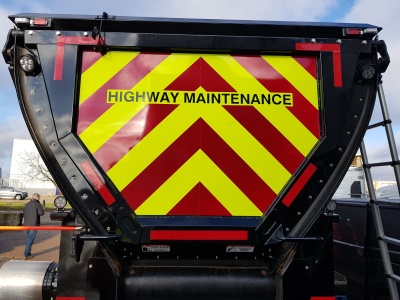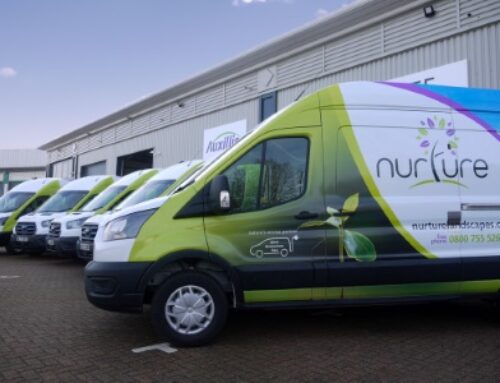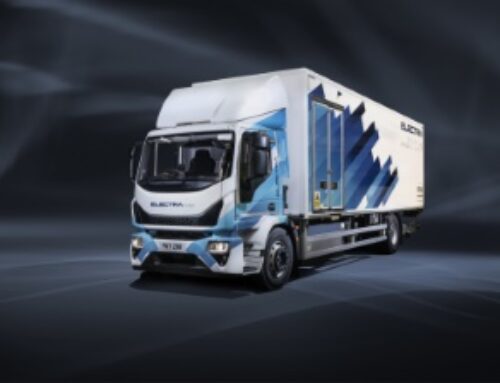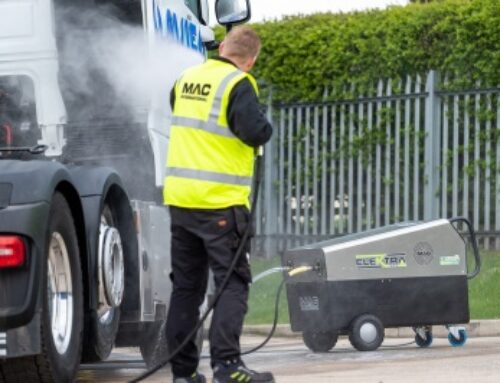Bluelite: driving safety with compliant markings
 Vehicle graphics provider Bluelite Group has provided advice for fleet managers to help ensure commercial vehicles carry suitable markings to keep road users safe.
Vehicle graphics provider Bluelite Group has provided advice for fleet managers to help ensure commercial vehicles carry suitable markings to keep road users safe.
“A good starting point is the Department for Transport’s Chapter 8 guidelines, which specify both the minimum requirement and best practice for chevrons used on the rears of vans and work vehicles either stopping on or using the UK’s highways,” advised Lorraine Avery, managing director at Bluelite Group.
Ignoring the guidelines could have serious consequences for operators judged to be negligent in terms of conspicuity in the event of accident, she says.
“That’s why local authorities, highway agencies, construction and maintenance companies – as well as thousands of companies managing logistics – have adopted these guidelines. Indeed, many make Chapter 8 markings a condition of entering their sites, so there are good business reasons for compliance that go beyond road safety.
“Alongside Chapter 8, many operators also adopt ECE104 regulations, which cover the use of retro-reflective contour safety markings on heavy goods vehicles. This regulation defines the standard of the reflective materials that should be used and how they should be positioned on the front, side or rear of vehicles or trailers.”
Reflectivity is something that all fleet operators need to think about carefully, says Lorraine.
“For example, rear chevron kits should no longer be manufactured from RA1 and RA2 level reflective materials because these no longer meet the required level of reflectivity – and therefore road safety – for vehicles on roads with speed limits over 40mph,” she said.
“The recommendation in England now is that Class R3B retroreflective materials should be used on vehicles working on higher speed roads as these benefit from reflective properties that optimise vehicle visibility to other road users in all weather conditions; in Scotland and Wales it is mandatory to use Class R3B retroreflective materials. Class R2 should now only be used to meet minimum retroreflective requirements on highways with speed limits under 40mph. Engineering grade materials are no longer recommended for any works vehicle applications.
“For ultimate conspicuity, an increasing number of fleets are also turning to high quality prismatic material that returns maximum light back to drivers’ eyes, is resistant to water and dirt ingress and is visible up to 140 metres in the dark.”
Managers also need to take account of guidelines advising on how chevrons and markings should appear, Lorraine adds.
“All vehicles that stop or are operating on all speeds of road should bear rear markings with upward facing chevrons in red and yellow alternating stripes. Each chevron stripe should be no less than 150mm in width (larger on big vehicles) and angled upwards between 45 and 60 degrees.
“The red stripes must be of retroreflective material, designed to maximise night-time visibility, while fluorescent yellow stripes are non-reflective, providing good visibility during the daytime.
“Staying in step with this changing conspicuity environment is no easy task, so at Bluelite Group we set up a specialist commercial vehicle markings division – Chevronshop.com – some years ago to offer fleet operators of every size an easy route to specifying and ordering approved markings and chevrons.
“Chevronshop.com provides online vehicle templates for hundreds of commercial vehicles, enabling managers to quickly identify the markings they need in the correct design and material composition, whether for rears, sides, contours, fenders…and even whole vehicle wraps.”










